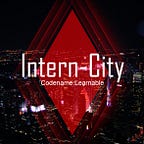HOW IT WORKS
Every day we eat food and we get energy from the food we eat. But how exactly does our sweet banana or egusi turn to energy? Afterall, energy is defined as the ability to do work so what the hell does banana have to do with work??? Well let’s see. For simplicity we would stick to carbohydrate throughout this article.
So when we take in glucose, the glucose is converted to Adenosine Triphosphate (ATP) via a series of steps known as glycolysis and kreb cycle. This reactions are quite complex and involves a series of steps called metabolic pathway because the process is actually a form of metabolism called catabolism.
Glycolysis and Kreb cycle all takes place in the cell but at different places eg glycolysis takes place in the cytoplasm while Kreb cycle which takes place in the mitochondria. Glycolysis involves a series of enzymes that converts glucose to glucose-6-phosphate by the enzyme hexokinase. Glucose-6-phosphate is converted to fructose-6-phosphate by an isomerase enzyme, but I obviously wouldn’t bore with the technical details to avoid brain tumor. Glycolysis 1st phase involves the investment of 2 ATP while the second phase involves the harvesting of 4 ATP resulting in the production of 2 net ATP.
The Kreb cycle is more tricky because the product of glycolysis (Pyruvate) is the starting point of this reaction so it is dependent on glycolysis but it is dependent on the presence or absence of oxygen. When there is no oxygen, we can’t undergo the Kreb cycle because of the enzyme pyruvate dehydrogenase which would not be able to operate. But when there is oxygen, the reaction proceeds via a series of a cyclic pathway that involves condensation with acetyl coA, to being converted to citrate… till it gets to oxaloacetate while restarts the reaction. Now one funny thing about this is that in the Kreb cycle, only FADH2 and NADH are produced. But these compounds are converted to ATP via another series of step known as the electron transport chain.
Enough of too many long talk, how does ATP converts to energy? This would require us to understand how negative charges on the compound confers a repelling effect which on distortion releases -7.4KJ/Mol and Adenosine Diphosphate (ADP).
Imagine ATP like a guy attached to 3 smaller guys (phosphates) that are repelled by one another. Since they repel, we could easily break the union between them thus releasing free energy that was locked in before. ADP could also be used a source of energy in some cases and of course it releases -7.4 KJ/Mol and Adenosine Mono phosphate (AMP).
It’s this free energy released from ATP that actually does the work in the cell (body) from motion to digestion ETC. And without it, there would be no life.
Have a nice day Intern 001
